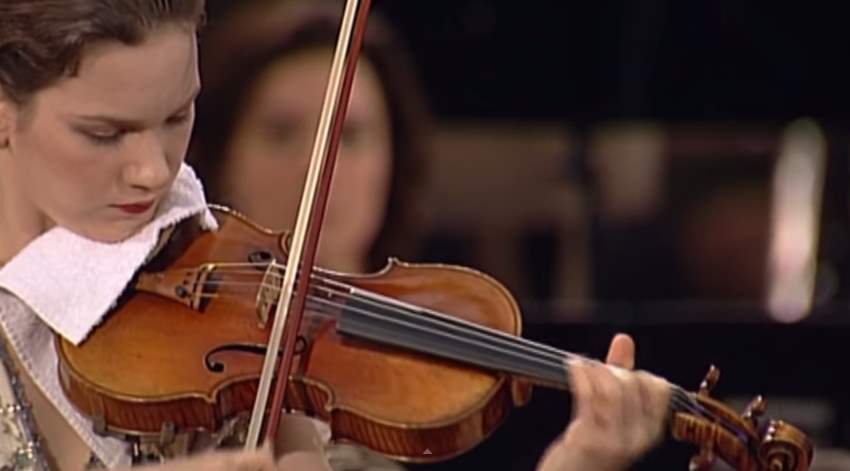Accompanied by the Tokyo-based NHK Symphony Orchestra, Dutch violinist Janine Jansen performs Wolfgang Amadeus Mozart’s Violin Concerto No. 3 in G major, K. 216. Conductor: Paavo Järvi. Encore: Sarabande (Bach).
Wolfgang Amadeus Mozart’s Violin Concerto No. 3
Mozart wrote this concerto in Salzburg in 1775 when he was 19 years old. In a letter to his father, Mozart called it the “Straßburg-Concert”.
The piece is in three movements:
- Allegro. The first movement is in sonata form, opening with a G major theme played by the orchestra. The main theme is a bright and happy discussion between the solo violin and the accompaniment, followed by modulation to the dominant D major, then to its parallel key D minor. It experiments in other keys but does not settle and eventually, heads back to the tonic, G major, in the recapitulation.
- Adagio. The second movement is in the ternary form in the dominant key of D major. The orchestra begins with the main theme, which the violin imitates one octave higher. The winds then play a dance-like motif in A major, which the violin concludes. The violin restates the main theme in A major, although the melody features A sharp instead of A natural, creating a brief modulation to B minor. It soon modulates back to A major, then to the home key of D major through the main theme. After the cadenza, the violin plays the main theme again, thus concluding the movement in D. This is the only movement in the five violin concertos by Mozart where a pair of flutes are used instead of oboes.
- Rondeau: Allegro. The finale of Mozart’s Violin Concerto No. 3 is a rondo in G major and in 3/8 time. Mozart inserts into the rondo a short G minor Andante section followed by a longer G major Allegretto section, both in cut time.
The work is scored for solo violin, two flutes (second movement only), two oboes (tacet in the second movement), two horns in G and D, and strings.
Sources
- Violin Concerto No. 3 (Mozart) on Wikipedia

